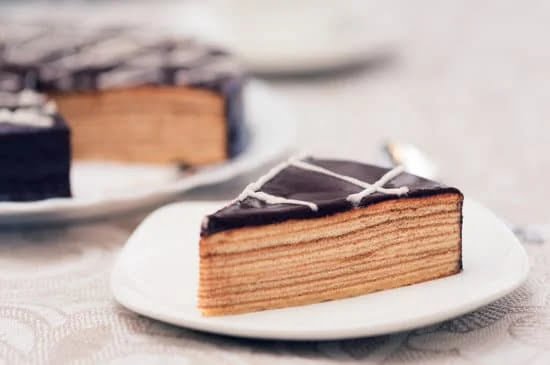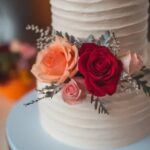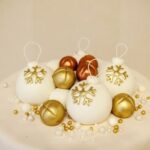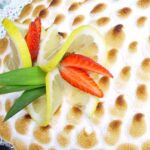Are you looking to elevate your cake decorating skills? Learn how to make frosting for decorating cakes with our comprehensive guide. Frosting plays an essential role in cake decorating, not only adding flavor but also providing a foundation for creative designs and decorations. Whether you’re a beginner or an experienced baker, mastering the art of frosting is the key to creating visually stunning and delicious cakes.
When it comes to frosting, there are various types to choose from, each offering different textures and flavors. From classic buttercream to rich cream cheese and smooth fondant, understanding the differences between these frostings will help you choose the right one for your cake. In this article, we’ll explore the different types of frosting and how they can be used to bring your cake decorating ideas to life.
To achieve perfect frosting for your cakes, it’s crucial to start with high-quality ingredients. We’ll discuss the essential components needed for making frosting, including butter, sugar, flavorings, and more. By using the right ingredients and following our step-by-step guide, you’ll be on your way to creating delectable frosting that is perfect for decorating cakes.
Types of Frosting
When it comes to cake decorating, choosing the right type of frosting is essential for achieving the desired look and taste. There are several types of frosting that can be used to decorate cakes, each with its own unique texture and flavor. Some of the most popular types include buttercream, cream cheese, fondant, and ganache.
Buttercream frosting is a classic choice for decorating cakes due to its smooth and creamy texture. It is made by creaming together butter and powdered sugar, and can be flavored in a variety of ways. Cream cheese frosting is another popular option that adds a tangy flavor to cakes and is perfect for pairing with red velvet or carrot cakes.
Fondant, on the other hand, is a rolled icing that can be used to create smooth and seamless finishes on cakes. Ganache is made from chocolate and cream, creating a rich and glossy frosting that is perfect for glazing or piping onto cakes.
Choosing the right frosting for your cake depends on several factors including the flavor of the cake itself, the desired level of sweetness, and the overall design you are looking to achieve. Each type of frosting has its own unique set of attributes that makes it suitable for different decorating techniques.
When considering how to make frosting for decorating cakes, it’s important to take into account not only the decoration itself but also the flavor profiles of both the frosting and cake. By understanding the characteristics of each type of frosting, you can make an informed decision on which will work best for your specific cake decorating needs.
- Buttercream
- Cream Cheese
- Fondant
- Ganache
Choosing the Right Frosting for Your Cake
When it comes to cake decorating, choosing the right frosting is essential to achieving the desired look and taste for your creation. The type of frosting you choose can greatly impact the overall flavor and appearance of your cake. There are several types of frosting to choose from, including buttercream, cream cheese, fondant, and more. Each type has its own unique texture and flavor, making it important to consider the specific needs of your cake before making a decision.
Consider the Flavor Profile
One of the most important factors to consider when choosing a frosting for your cake is the flavor profile. Some frostings, like buttercream, are rich and creamy with a slightly sweet taste, while others, like cream cheese frosting, have a tangy and slightly savory flavor.
Consider the flavors of the cake itself and how they will pair with different types of frosting. For example, a rich chocolate cake might be best paired with a lighter buttercream frosting, while a tangy lemon cake might benefit from a cream cheese frosting.
Texture and Consistency
Another important consideration when choosing the right frosting for your cake is the texture and consistency of the frosting. Buttercream is smooth and easy to spread or pipe onto cakes, while fondant can be rolled out into thin sheets for a clean and polished finish.
Consider how you want your finished cake to look and whether you need a frosting that will hold its shape for intricate decorating techniques. The texture and consistency of the frosting can greatly impact the final appearance of your decorated cake.
Dietary Restrictions and Preferences
It’s important to take into account any dietary restrictions or preferences when choosing a frosting for your cake. For example, if you need to make a dairy-free or vegan cake, you might opt for a coconut milk-based buttercream or a vegan cream cheese frosting.
Likewise, if you’re making a sugar-free or low-carb cake, there are options for making frostings using alternative sweeteners such as stevia or erythritol. Considering these factors will ensure that everyone can enjoy your deliciously decorated cake without worry.
Essential Ingredients for Making Frosting
When it comes to making frosting for decorating cakes, it’s essential to have the right ingredients on hand. The key to making a delicious and beautiful frosting lies in using quality ingredients that will give your frosting the perfect texture and flavor. The essential ingredients for making frosting include butter, powdered sugar, vanilla extract, and milk or heavy cream.
Butter is a fundamental ingredient in most types of frosting, as it provides richness and a smooth texture. It’s important to use unsalted butter at room temperature, as this will ensure that the butter incorporates well with the other ingredients. Powdered sugar is used to sweeten the frosting and give it structure.
Vanilla extract adds flavor to the frosting, so it’s crucial to use pure vanilla extract for the best taste. Additionally, using whole milk or heavy cream will help achieve the desired consistency for spreading or piping the frosting onto your cake.
In addition to these basic ingredients, you can also add variations such as cocoa powder for chocolate frosting or cream cheese for a tangy flavor in cream cheese frosting. By having these essential ingredients on hand and understanding their role in creating perfect frosting, you’ll be well-equipped to make delicious and visually stunning cakes.
| Ingredient | Role |
|---|---|
| Butter | Provides richness and smooth texture |
| Powdered sugar | Sweetens the frosting and gives structure |
| Vanilla extract | Adds flavor to the frosting |
| Milk or heavy cream | Helps achieve desired consistency for spreading or piping |
Step-by-Step Guide on How to Make Buttercream Frosting
Buttercream frosting is a classic and versatile option for decorating cakes. It is smooth, creamy, and easy to work with, making it the perfect choice for both beginners and experienced bakers. In this step-by-step guide, we will walk you through the process of making delicious buttercream frosting for your next cake decorating project.
To make buttercream frosting, you will need just a few simple ingredients: unsalted butter, confectioners’ sugar, vanilla extract, and heavy cream or milk. The key to achieving the perfect texture and flavor is using high-quality ingredients, so be sure to choose the best butter and pure vanilla extract available.
Start by creaming the softened butter in a mixing bowl until it becomes light and fluffy. Gradually add in the confectioners’ sugar, mixing well after each addition. This will help prevent lumps in your frosting and ensure a smooth consistency. Once all the sugar has been incorporated, pour in the vanilla extract and a small amount of heavy cream or milk to achieve your desired consistency.
Continue beating the mixture until it is smooth and spreadable. If you want to add color to your buttercream frosting, simply mix in a few drops of food coloring until you reach the desired shade. Your homemade buttercream frosting is now ready to use for decorating cakes.
Now that you have mastered the art of making buttercream frosting for decorating cakes, you can let your creativity run wild. Experiment with different flavors, colors, and piping techniques to create beautifully decorated cakes that will impress your friends and family. With a little practice and patience, you’ll be able to produce professional-looking cakes that taste as good as they look.
Tips and Tricks for Perfecting Your Frosting
When it comes to cake decorating, having the perfect frosting is key to achieving a professional and beautiful finish. Whether you are using buttercream, cream cheese, fondant, or any other type of frosting, there are some tips and tricks that can help you perfect your frosting every time.
One important tip for perfecting your frosting is to make sure that your butter or cream cheese is at the right temperature before you start. It should be softened but not melted, as this will affect the texture of your frosting. Another key factor in achieving smooth and creamy frosting is to sift your powdered sugar before incorporating it into your mixture. This helps to prevent lumps and ensures a silky texture.
In addition to temperature and texture, the consistency of your frosting is crucial for cake decorating. If your frosting is too stiff, it will be difficult to spread or pipe onto your cake, while if it’s too runny, it won’t hold its shape. To achieve the perfect consistency, gradually add liquid (such as milk or cream) or powdered sugar until you reach the desired texture.
Finally, don’t forget about flavor. Adding extracts such as vanilla or almond can elevate the taste of your frosting and take your cake decorating to the next level.
Mastering the art of frosting for decorating cakes takes practice, but with these tips and tricks, you’ll be well on your way to creating beautifully decorated cakes that not only look stunning but taste delicious too.
Decorating Techniques
When it comes to decorating cakes with frosting, there are various techniques that can be used to achieve different looks and designs. Whether you’re a beginner or an experienced baker, mastering these decorating techniques can help take your cakes to the next level. Below are some popular decorating techniques using piping and spatula:
Piping Techniques:
- Round Tip: This is perfect for creating borders, writing messages, or making simple floral designs.
- Star Tip: Use this tip to create beautiful rosettes, stars, and shells for a more intricate design.
- Leaf Tip: Ideal for making leaves and other foliage decorations for a nature-inspired cake theme.
- Ruffled Tip: Create elegant ruffles or delicate lace patterns with this tip for a sophisticated look.
Spatula Techniques:
- Smooth Finish: Use an offset spatula to create a smooth and even finish on the surface of the cake before adding any additional decorations.
- Textured Finish: Experiment with different spatula patterns to add texture and interest to your frosting, such as waves or swirls for a more rustic look.
- Ombre Effect: Blend different colors of frosting together using a spatula to create a beautiful ombre effect on the sides of the cake.
By mastering these piping and spatula techniques, you can elevate your cake decorating skills and impress your friends and family with professional-looking desserts. Practice patience and precision when trying out these techniques to achieve the best results. Remember that practice makes perfect.
Now that you have learned about some basic decorating techniques using piping tips and spatulas, it’s time to put your new skills to use when it comes to putting the finishing touches on your cakes.
Creative Ideas for Decorating Cakes With Frosting
When it comes to decorating cakes with frosting, the possibilities are endless. From simple swirls and rosettes to intricate designs and patterns, frosting can be used in countless creative ways to make your cakes look stunning. Here are some creative ideas for decorating cakes with frosting that will help you take your cake decorating skills to the next level.
Texture Play
One creative idea for decorating cakes with frosting is to play around with different textures. You can use a spatula to create a rustic, textured look on the sides of the cake, or experiment with piping different patterns and designs on top of the cake. Try using different types of tips for your piping bag to achieve various textures, such as ruffles, stars, or even basketweave patterns.
Colorful Ombre
Another creative way to decorate cakes with frosting is to create an ombre effect using different shades of colored frosting. Start with a base color and gradually mix in more or less food coloring to create lighter and darker shades. Then, use a spatula or piping bag to blend the colors together on the cake for a beautiful ombre effect that is sure to impress.
Edible Art
Get artistic with your frosting by creating edible art on your cakes. Use frosting as your medium and let your imagination run wild. Whether it’s floral designs, geometric shapes, or even characters and scenes, frosting can be used to create stunning edible works of art on your cakes.
By incorporating these creative ideas into your cake decorating repertoire, you can elevate your frosting game and create visually stunning treats that are sure to be the star of any celebration. Experiment with different techniques and don’t be afraid to think outside the box when it comes to decorating cakes with frosting. With a little practice and creativity, you can turn any cake into a masterpiece.
Conclusion
In conclusion, mastering the art of frosting and cake decorating can truly elevate your baking skills and take your cakes to the next level. Whether you prefer a classic buttercream frosting or a more intricate fondant design, the options for creating beautiful and delicious cakes are endless. By understanding the different types of frostings and choosing the right one for your cake, you can ensure that your creations not only look amazing but also taste incredible.
The essential ingredients for making frosting are simple and readily available, allowing you to create masterpiece cakes in the comfort of your own kitchen. With our step-by-step guide on how to make buttercream frosting, you can easily achieve a smooth and creamy consistency that is perfect for decorating. Additionally, our tips and tricks for perfecting your frosting will help you avoid common pitfalls and achieve professional-looking results every time.
From piping techniques to using a spatula for smooth finishes, there are many ways to decorate cakes with frosting. Whether you want to create intricate designs or keep it simple yet elegant, mastering these decorating techniques will allow you to bring your creative ideas to life. Ultimately, by incorporating different flavors, colors, and textures into your frosting designs, you can truly make each cake unique and special. Cheers to becoming a master in the art of frosting and cake decorating.
Frequently Asked Questions
What Frosting Is Best for Decorating Cakes?
The best frosting for decorating cakes is buttercream. It has a smooth texture, making it easy to spread and pipe onto cakes. Its versatility allows for different colors and designs to be created.
What Frosting Do Professionals Use for Cakes?
Professionals often use Swiss meringue buttercream for decorating cakes. This type of frosting is known for its stability, silky texture, and less sweetness compared to American buttercream, making it easier to work with.
How Do You Make Frosting Better for Decorating?
To make frosting better for decorating, you can adjust the consistency by adding more powdered sugar for stiffness or incorporating heavy cream for a smoother texture. Using gel food coloring instead of liquid can also prevent the frosting from becoming too thin or runny when tinted.

Welcome to our cake decorating blog! My name is Destiny Flores, and I am the proud owner of a cake decorating business named Cake Karma. Our mission is to provide delicious, beautiful cakes for all occasions. We specialize in creating custom cakes that are tailored specifically to each customer’s individual needs and tastes.





